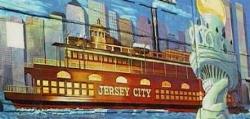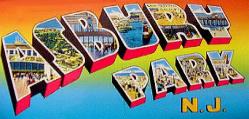 |  |  |
|
| ||
 |  |  |
 |  |  |
|
| ||
 |  |  |
|
|
The area that is now Liberty State Park has always served as a transportation center with access to the Hudson River. There is evidence which suggests that the Lenape Indians used this area for several encampments. The area provided the Lenape Indians access to the river for hunting and oystering. Gradually the area was settled, first by the early Dutch, English, and Swedish. The first ferry service, chartered in 1661, was used to haul cargo and passengers across what was already becoming a thriving port. By 1836 the Morris Canal, which now forms the northern boundary of Liberty State Park,, was completed. The Canal was used to bring coal from the anthracite mines of Pennsylvania to the metropolitan area. It fell into disuse with a rise of the railroads and was later abandoned in 1924.
During the latter half of the 19th century, the Central Railroad of New Jersey and the Lehigh Valley Railroad began to develop this area as a prime site for railroad freight and commuter operations. In 1889, the present CRRNJ Terminal was constructed. This historic terminal, which has been partially restored and is located on the north embankment of the park, became a major transportation center for the New York area. By 1915, between 30,000-50,000 commuters passed through the terminal daily. Immigrants from northern, southern, and eastern Europe added to the numbers. They had ,just been processed through Ellis Island and were beginning the final leg of their journey to a new life in the United States. More than eight million immigrants set foot on mainland U.S. soil for the first time at the CRRNJ Terminal.
During World War 1, the southern area of the park served as a munitions depot. This was the site of the famous Black Tom explosion in 1916. The explosion, which is believed to have been an act of German sabotage, involved freight cars of munitions bound for Europe and the Allied Forces.
The 1950's and 1960's brought an end to the railroad activities in this area. In the 1950's, an improved system of highways, bridges, and tunnels established truck transport as a major alternative to shipping freight by railroad. No longer tied to the railways, industrial development shifted away from the waterfront and to New Jersey's suburban areas. In the 1960s, the automobile replaced mass transit as a means of commuter transportation. As a result, the railroad facilities and land were abandoned.
Through the use of Green Acres Bond Funds and Land and Water Conservation funds, acquisition of land for Liberty State Park began with Jersey City donating the first 156 acres. The Department of Environmental Protection in conjunction with the U.S. Army Corps of Engineers began a major harbor cleanup effort in the park area.
The first phase of park development was completed at the southern end of the park as part of the nation's Bicentennial Celebration. This 35-acre site adjacent to the Statue of Liberty opened a dramatic harbor vista. The entrance of the park is lined with fifty State flags in order of each State's induction into the Union. A circle of thirteen United States flags are flown representing the thirteen original colonies also flown are historic flags from the Revolutionary era.
 Your Ancestors' Story |
 Bruce Springsteen's Jersey Shore Rock Haven! |

|
UrbanTimes.com |